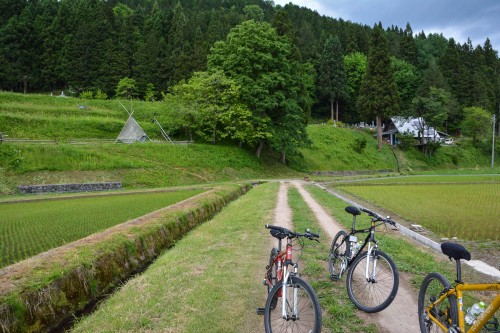Shiritani Unsuikyo in Yakushima , a lush, green nature park
It is difficult to explain through words, or even pictures, the gravitas of what I witnessed at Shiritani Unsuikyo. It was, without a doubt, the most magical, inspiring and awe-inducing place I have ever been in Japan, if not, perhaps even in my entire life. I would go back any day, in a heartbeat.
With its main attraction being a part of the forest that inspired some of the artwork for the popular Studio Ghibli film, Princess Mononoke (Mononoke Hime), Shiritani Unsuikyo is one of the most popular hiking trails in Yakushima. It is said that Oga Kazuo, a lead artist in the film, spent many hours here, working on sketches for the forest created in the film, and there is absolutely no doubt that that there are some remarkable similarities. The twisted movements of tree textures and colours weave themselves through the mossy earth, and entangle themselves around neighbouring trees and branches, like they’re moving in front of your very eyes. Never before could I have imagined that a forest like the one featured in Princess Mononoke could actually be that close to reality.
The mystical vibrancy of the green moss falling over the sea of perfectly smooth rocks, dripping from the flowing water of the nearby waterfall, all create just a slice of the perfect imagery that this forest has to offer. Dotted in and amongst these vibrant greens are an abundance of equally mystical and ancient Yaku Cedar Trees, including some over 1,000 years old, termed Yakusugi trees. These ancient cedars, such as Nidaiosugi, Kugurisugi and Yayoisugi, are lovingly pinpointed on the guide map you receive as you enter the park, with some just 15 minutes walk from the opening gate. While these are well worth visiting, the forest in its entirety is filled with the most amazing trees, some so remarkably smooth it’s like they have been polished, some twisted, some randomly orange, some bulging, some creepy, some mossy, some hugging their neighbouring trees, some strangling them and most of them are simply surreal. It is quite simply the most mystical and magical place I have ever been.
How to navigate in Shiratani Unsuikyo, Yakushima
While the maps in Japan are generally quite useless, the navigation around this area was very good. While it is simply a few colourful squiggly lines on the guide map you are given (also available in English), it is numbered, with English signs on route for clarification. The route is also accompanied by the distance, so you have an idea of how long it is until the next stopping point. In addition, brightly coloured red ribbons are tied to tree branches and roots to mark your path. And, while it can be easy to go the wrong way if you aren’t paying attention, there are so many ribbons around that you are likely to find one nearby to get back to the correct path. All in all, this makes hiking through the forest alone far more relaxing.
Shiritani Unsuikyo has something for everyone. If you can’t or do not want to traverse mountain trails, there is a route for you. Choose between the yayoisugi (1 hour), Bugyosugi (3 hours) or the Taikoiwa return course (4 hours) depending on your physical capabilities and desires. Since I wanted to see as much of the forest as possible, I journeyed through the mountainous trails of the buyosugi course to reach the Shiritani mountain hut, before joining the Taikoiwa return course to Taikoiwa Rock. The whole climb only took me about 4 and a half hours, but with minimal stops (as I was determined). I didn’t go the Yayoisugi course, but if you are particularly keen, fit, healthy, and not still completely exhausted from the 9 hour hike you did yesterday to Jomon Sugi, you could definitely do it all in one day.
My Recommendation
I would definitely recommend going to Taikoiwa rock is which, as the name suggests, is a large rock at the top of a mountain. With no trees blocking your view, you can see an almost panoramic style view just from one single spot on the rock. The view is quite simply breathtaking and more than worth the steep climb to the top. The only problem is that the rock can only hold about 20 people on its surface before things start getting a little dangerous.
Essential equipment
- Hiking boots.
- Water. Come with a small bottle and re-fill it where ever you see flowing water from a pipe or waterfall.
- Lunch and snacks for the go.
- A light rain coat, since the rain in Yakushima is a little unpredictable.
- Layer your clothing as you are likely to get hot whilst climbing, but cool down as you return.
- A plastic bag to sit on if the benches are wet. You can also put wet and smelly belongings in them or use them as rubbish bags.
- Wet wipes are useful for everything from washing your hands, to washing the stink from your armpits. They are the number one piece of sanitary equipment every traveler should carry.
Words simply cannot describe how amazing this place is. I loved every single second of journeying through this forest and would not be surprised if it is one of the best in the entire world. If you ever get the chance, come to Yakushima for the journey of a lifetime.
[cft format=0]






















No Comments yet!